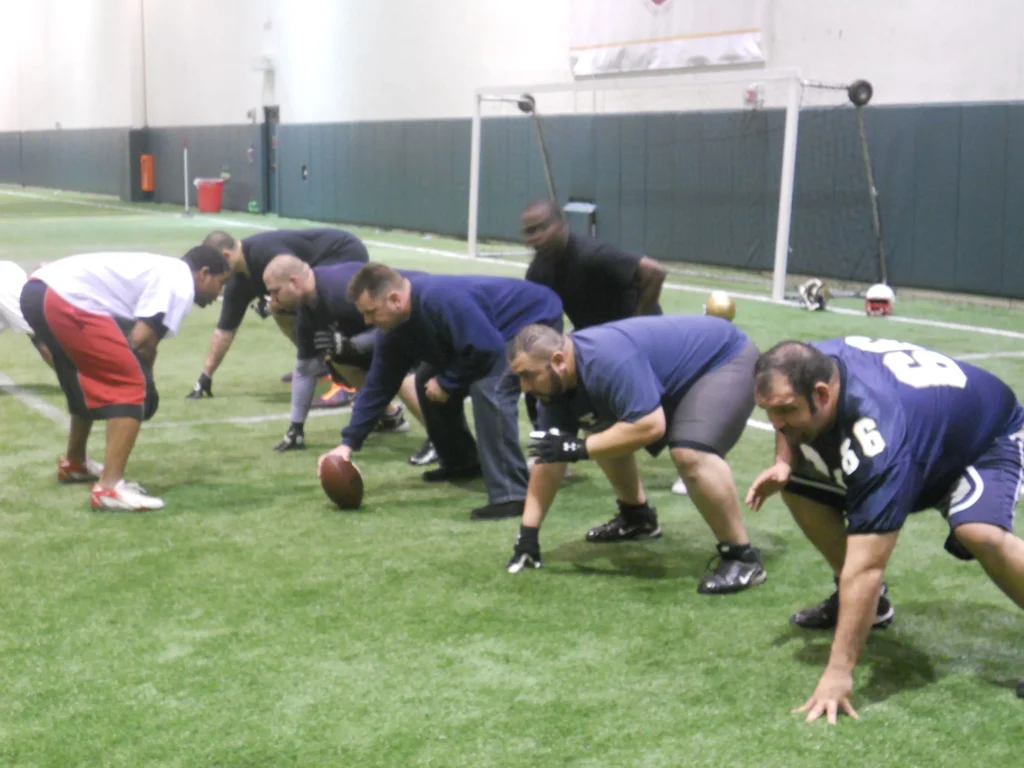Latest sports trends 2025 are reshaping how games are played, how teams compete, and how fans experience the action. From data analytics in sports driving smarter decisions to live streaming sports 2025 delivering personalized content, the season is weaving technology and analytics into every matchup. For fans, staying ahead means understanding why a play unfolds the way it does, with athlete performance technology revealing the science behind peak effort. This convergence is also changing fan engagement 2025, as stadium and digital experiences merge through interactive stats, mobile apps, and real-time insights. As this evolution continues, expect broader access to data-driven narratives, deeper context on sports trends 2025, and smarter broadcasts that put you closer to the action.
As 2025 unfolds, the conversation shifts toward smarter, more connected competition and viewer-centric broadcasting. Rather than merely listing headlines, the emphasis is on a broader tech-forward ecosystem—data analytics in sports presented as real-time insights, and live streaming sports 2025 experiences that adapt to how you watch. Behind the scenes, wearable technology, motion data, and thoughtful data governance drive smarter decisions and faster recovery, while fans enjoy more personalized content. In this LSI-inspired era, terms like sports intelligence, digital engagement, and adaptive distribution describe the same core shift toward a more informed, inclusive fan experience.
Data analytics in sports: turning numbers into strategy
Data analytics in sports has moved from a back-office tool to a strategic compass. Teams deploy dashboards that translate complex statistics into actionable signals during games, with real-time data from wearables and biomechanical sensors feeding predictive models powered by machine learning. This shift enables coaches to assess pace, spacing, and load in the moment, turning raw numbers into smarter on-field decisions that can change the outcome of a matchup.
For fans, data storytelling brings context to every play—explaining why a substitution happened or why a team prioritized a matchup. The practical impact includes injury risk prediction, training-load optimization, and tailored recovery programs that help athletes stay at peak performance longer. As data analytics in sports becomes more accessible through interactive overlays and explainer content, fans gain a richer, more informed viewing experience.
Fan engagement 2025: from stadiums to social streams
Fan engagement 2025 expands beyond the stands into a multi-touchpoint ecosystem that blends in-stadium experiences with second-screen content and personalized streaming options. Fans crave context, background stories, and real-time insights that deepen their connection to the game, fueling demand for live polls, fantasy integrations, and on-demand analytics.
Leagues are investing in better mobile experiences, AR overlays, and community-building features that make fans feel part of a larger team culture. This creates a sticky experience where audiences return for interactive content, social conversation, and personalized recommendations, turning every game into a broader sports experience rather than a single event.
Live streaming and broadcasting: a multi-platform future
Live streaming sports 2025 centers on flexibility and personalization. Viewers expect to watch on a big screen, a tablet during transit, or a quick highlight reel on social, which drives adaptive streaming, transcendent audio, and content that adapts to viewing context. The result is a seamless journey across devices and moments that fit a fan’s lifestyle.
Dynamic ad insertion, interactive camera angles, and on-demand rewinds are becoming standard features, enabling fans to customize their viewing experience. Broadcasters and platforms are pursuing innovative distribution models and partnerships to reach wider, more diverse audiences, ensuring that live streaming sports 2025 broadens access while preserving depth of coverage and context.
Athlete performance technology: wearable tech meets training science
Athlete performance technology brings wearables and non-invasive sensors from the training room into competition. Real-time metrics—heart rate, cadence, energy expenditure, and biomechanical Loads—inform training programs, optimize load management, and speed rehabilitation. For fans, these data points translate into a visible science of performance, explaining how athletes sustain peak speed, endurance, and precision.
Teams increasingly integrate wearable tech with imaging, video analysis, and motion capture to build a holistic picture of an athlete’s physical state. This integration supports smarter lineup decisions, optimized practice schedules, and more personalized coaching. While privacy and consent remain critical conversations, the trend toward athlete performance technology is reshaping both preparation and in-game strategy.
Global leagues and the economics of attention
As streaming platforms expand, global leagues offer localized content, multi-language commentary, and region-specific marketing to reach fans in regional markets. This globalization, paired with hyper-targeted marketing and creator-driven content, creates more opportunities for discovery and sustained interest across time zones and cultures.
Economically, the attention economy rewards platforms that monetize engagement across devices. Short-form clips, behind-the-scenes access, and partnerships with creators fuel ongoing interest during off-seasons, while in-stadium technologies—mobile ordering and cashless systems—further blend live and digital experiences, encouraging fans to engage year-round and across formats.
Latest sports trends 2025: privacy, ethics, and responsible innovation
Latest sports trends 2025 places privacy and ethics at the core of innovation. Fans expect transparency about what data is collected, how it’s used, and who can access it. Clear data governance policies, opt-out options, and demonstrable benefits from analytics and wearables become competitive differentiators for leagues and platforms alike.
As technology accelerates, responsible innovation—covering data ownership, consent, and ethical considerations—will shape both the fan experience and on-field decision-making. Building trust through accountable practices supports smarter analytics, safer streaming, and more responsible use of athlete performance technology, ensuring the evolution remains aligned with fan values.
Frequently Asked Questions
What are the Latest sports trends 2025 and how are they reshaping the game?
In 2025, technology, data analytics in sports, and fan-centric experiences reshape both strategy and viewing. Real-time dashboards, wearable insights, and advanced streaming options drive smarter on-field decisions and a richer, personalized fan journey.
How is data analytics in sports influencing team strategy in 2025?
Data analytics in sports enables real-time decision support, injury risk prediction, and optimized training loads. Biomechanical and sensor data inform tactical choices and recovery plans, turning numbers into practical performance improvements for teams.
What does fan engagement 2025 look like across venues and broadcasts?
Fan engagement 2025 spans in-stadium experiences, second-screen content, and personalized streaming. Interactive polls, AR overlays, fantasy integrations, and on-demand analytics deepen connections and make fans feel like active participants in the sport.
How is live streaming sports 2025 changing how fans watch games?
Live streaming sports 2025 emphasizes adaptive streaming, multi-device access, and personalized viewing journeys. Features like interactive camera angles, dynamic ads, and on-demand rewinds broaden access and tailor the viewing experience to individual preferences.
What role does athlete performance technology play in 2025?
Athlete performance technology uses wearables and sensors to monitor heart rate, cadence, and biomechanics, guiding training and rehabilitation. This enables smarter lineups and faster recovery while sparking important conversations about privacy and data ownership.
Why is data privacy a key consideration in the Latest sports trends 2025?
Data privacy is essential as data collection expands across platforms. In 2025, leagues should publish governance policies, provide opt-out options, and demonstrate clear benefits to fans, balancing innovation with responsible, ethical use of data.
| Topic | Key Idea | Why It Matters | Implications / Examples |
|---|---|---|---|
| Data analytics in sports | Advanced analytics integrated with real-time insights; dashboards translate stats into decisions; biomechanical data from wearables. | Informs smarter decisions, reduces injury risk, and enriches fan understanding through data storytelling. | ML-based injury risk prediction; real-time tactical dashboards; interactive on-screen stats for fans. |
| Fan engagement 2025 | Engagement spans in-stadium, second-screen, and personalized streaming; live polls, fantasy integrations, and on-demand analytics. | Creates deeper connections and more ways to participate; builds a sticky ecosystem of insights and community. | AR overlays; enhanced mobile experiences; personalized content streams; social and community features. |
| Live streaming and broadcasting | Multi-platform viewing with adaptive streaming, customizable camera angles, dynamic ads, and on-demand rewinds. | Expands access and relevance, broadening and diversifying the audience. | Partnerships with streaming platforms; context-aware viewing; flexible highlight packages. |
| Athlete performance technology | Wearables and sensors provide continuous data; integration with imaging, video analysis, and motion capture. | Enhances performance while offering transparency into conditioning and training science. | Smarter lineup decisions; optimized practice; privacy and data governance considerations. |
| Global leagues, regional markets, and attention economics | Localized content, multi-language commentary, region-specific marketing; monetization via clips and creator partnerships. | Expands access and sustains engagement across platforms and regions. | Global reach with regional customization; strategic distribution; translation and localized marketing. |
| Data privacy, ethics, and responsible innovation | Growing focus on transparent data collection, clear policies, and fan opt-outs. | Protects trust, meets regulatory expectations, and differentiates organizations on ethics. | Clear governance policies; opt-out options; privacy-by-design in innovations. |
Summary
Latest sports trends 2025 are reshaping how fans experience the game, blending technology, data, and fan culture into a more immersive sports ecosystem. The driving forces include smarter on-field decision-making through data analytics, richer fan journeys via live and on-demand content, and the growing role of wearable technology in performance. Streaming, personalization, and global access push leagues to innovate while balancing privacy and ethics. Fans can navigate this evolving landscape by staying curious, engaging across platforms, and appreciating the data-driven storytelling behind each matchup. Ultimately, Latest sports trends 2025 point toward a more connected, transparent, and engaging sports world.


